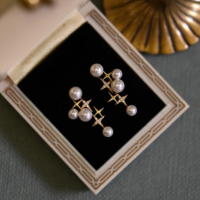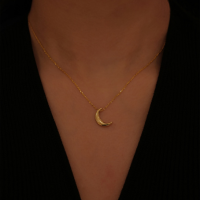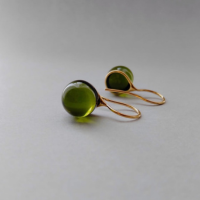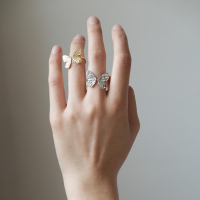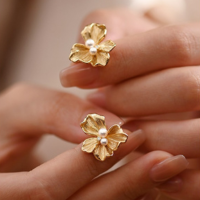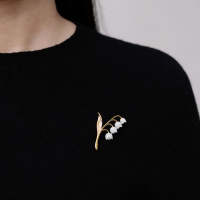
Ring Size Guide: How to Measure, Tips, and Sizing Methods for the Perfect Fit
Check out our personalized jewelry collections! (kids drawing jewelry, coin jewelry, wire jewelry, fingerprint jewelry, handwriting jewelry, and more)
Finding the perfect ring fit can be tricky, especially when shopping online. Whether you’re looking for a dainty everyday band, a stackable ring set, or that once-in-a-lifetime engagement ring, getting the right size is crucial for comfort and style. In this guide, we’ll walk you through everything you need to know about measuring your ring size at home, choosing the perfect fit, and understanding ring size conversions across different countries. Let’s dive in!
Why Ring Size Matters
A ring isn’t just an accessory—it’s a statement piece that should feel comfortable throughout the day. If a ring is too loose, it can slip off unnoticed; if it’s too tight, it can irritate your skin and become uncomfortable. Proper sizing is especially important for engagement or wedding bands, which you’ll likely wear every day. When you know how to accurately measure and select the right size, you can shop online with confidence and avoid the hassle of returns or resizing.
Ring Size Chart
Our rings are sized using standard U.S. measurements. However, many countries—such as the UK, France, Germany, Japan, and Switzerland—use their own unique sizing systems. To make things easier, you can find plenty of ring size conversion charts online. Below is a quick reference guide:
| Our Ring Size | EU Ring Size | Inner Diameter of Ring (mm) | Finger Circumference (mm) |
| 3 | 44–45 | ~14.1 | ~44.2 |
| 4 | 46–47 | ~14.9 | ~46.7 |
| 5 | 48–50 | ~15.7 | ~49.3 |
| 6 | 51–52 | ~16.5 | ~51.3 |
| 7 | 53–55 | ~17.3 | ~55.0 |
| 8 | 56–58 | ~18.2 | ~57.8 |
| 9 | 59–60 | ~19.1 | ~60.0 |
| 10 | 61–63 | ~19.8 | ~62.2 |
Pro Tip: If you’re between two sizes, it’s generally safer to go for the larger size for a more comfortable fit—especially if you live in a climate with warmer temperatures or if your fingers tend to swell.
Fun fact: The most common ring sizes for women’s ring fingers range between sizes 6 and 7 in the U.S.
3 Easy Methods to Measure Your Ring Size
1. The Ring Diameter Method
One of the simplest ways to find your ring size is by measuring a ring you already own that fits well.
How to Do It:
- Pick a ring that fits the intended finger correctly.
- Measure the inside diameter of the ring in millimeters.
- Match that measurement to the “Inner Diameter (mm)” column in our ring size chart.
It’s that easy! This method works best with rings that have a uniform shape and width.
2. The Finger Circumference Method
No ring on hand? No problem! You can use common household items to measure your finger’s circumference.
How to Do It:
- Gather a thin piece of string, dental floss, or a thin strip of paper—plus a pen and ruler (or measuring tape).
- Wrap the chosen material snugly around the finger where you want to wear the ring.
- Mark the spot where the ends meet with a pen.
- Lay the string or paper flat and measure its length in millimeters.
- Match that measurement to the “Finger Circumference (mm)” column in our ring size chart above.
This DIY method provides a quick and reliable measurement, especially when you don’t already have a fitting ring.
3. Professional Measurement or Ring Sizer Tools
If you prefer a completely foolproof approach, consider these options:
- Professional Jeweler: Most jewelry stores offer free ring sizing services. An expert can measure your exact size in seconds and offer guidance if you’re in between sizes.
- Adjustable Ring Sizer: You can purchase (or sometimes request) a plastic ring sizer that works like a little belt for your finger. It’s reusable and can be a perfect solution for those who frequently order rings online or plan to buy rings as gifts.
Tips for Getting the Most Accurate Measurement
- Measure at the Right Time: Avoid measuring your fingers when they’re swollen (after exercise, alcohol, or in hot weather) or when they’re shrunken (in cold weather). Aim for a time of day when your fingers are at a normal size—usually mid-afternoon.
- Consider Your Knuckles: If your knuckles are more prominent, size up slightly to ensure the ring can slide over them comfortably.
- Account for Hand Differences: Your left and right hands can vary in size, so always measure the specific hand (and finger!) for the ring you plan to wear.
- Seasonal Changes: Fingers may swell slightly in warmer weather or during pregnancy. Keep this in mind if you’re ordering a ring that you’ll wear all year round.
- Perfect Fit: The ideal ring should slip on with ease but feel snug enough that it offers a little resistance when you remove it—secure yet comfortable.
Understanding Regional Ring Size Differences
Different countries have their own systems for ring measurements. For instance:
- UK, Australia, and Ireland typically use alphabetical sizing (e.g., size K, L, M).
- European Union often measures in millimeters of circumference (e.g., size 50, 52, 54).
- Japan uses a numeric scale that’s different from the U.S. numeric scale.
If you’re shopping internationally, a ring size conversion chart can help you bridge these differences. Make sure to confirm which sizing standard a jeweler uses before placing your order.
Width and Style Considerations
- Wide Bands: Thicker or wider bands tend to fit more snugly. If you’re considering a bold statement ring with a wide band, you may need to size up a half size to maintain comfort.
- Stackable Rings: When stacking multiple thin bands on a single finger, it can feel tighter than just one ring. Factor this into your overall size selection to ensure a comfy fit.
What If You’re In Between Sizes?
When in doubt, choose the slightly larger size for better comfort. You can always add a small ring adjuster if it’s a bit loose. However, if you’re planning on wearing your ring daily, it’s best to get as precise a measurement as possible—especially for valuable pieces like wedding and engagement rings.
Put Your New Ring Sizing Know-How to Good Use
Any finger can be a "ring finger" with the help of our ring size chart and measurement tips! Once you’ve nailed down your perfect size, be sure to explore our personalized ring collections—or check out our latest statement rings. Whether you’re treating yourself or searching for the ideal gift, knowing your correct size means you can focus on the fun part: picking the perfect design.
Happy shopping! We wish you the best of luck finding the ring that speaks to your personal style. And remember, a properly fitted ring feels like an effortless extension of you—no slipping, no pinching, just pure sparkle!
Enjoy your new favorite ring and wear it confidently, knowing it’s sized just right for you. If you have any questions or need further help, don’t hesitate to reach out to our customer support team. We’re always here to guide you on your jewelry journey!
FAQs
Can all rings be resized if I order the wrong size?
Not all rings can be resized, especially if they have intricate designs or certain settings. It’s best to confirm with the jeweler or check the product description before buying.
What is the most common ring size for women?
Sizes 6 and 7 are the most common for women in the U.S. However, always measure to be certain!
How do I measure my partner’s ring size in secret for a surprise proposal?
Borrow a ring they already wear on the intended finger and use the diameter method to find its size. If you’re unsure of which finger they wear it on, you may need to use subtle hints or enlist a friend for help.
What if my finger swells or changes size over time?
It’s normal for finger sizes to fluctuate slightly. If you experience a major change, a jeweler may be able to resize your ring (depending on the style).
Disclaimer: While the methods provided are highly reliable, slight variations may occur depending on measuring tools and personal factors. When in doubt, consult a professional jeweler for the most accurate measurement.

